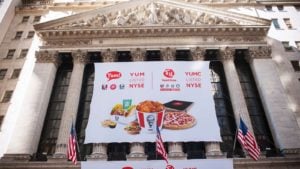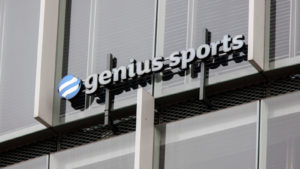However, IPOs like Reddit are often poor long-term bets. On average, the 143 largest tech IPOs of the past decade have underperformed the market by 18%, driven by laggards like Fitbit and King Games. Backdoor special purpose acquisition company (SPAC) listings have performed even worse, with nine out of 10 companies trading below their initial merger prices.
That’s because corporate insiders have every incentive to pump these stocks in early trading days, allowing them to cash out at the highest possible valuations. They will often overpromise right as their shares hit the market, leaving public investors with overvalued companies that have little chance of hitting these lofty targets.
That’s why I tend to favor Perpetual Money Machines, the high-returning companies like Starbucks (NASDAQ:SBUX) and Nvidia (NASDAQ:NVDA) that can turn small sums into fortunes, given a long enough horizon. These companies have the ability to generate high returns, and have the discipline to continue reinvesting into their businesses. And as for fresh IPOs, I seek out companies where insiders maintain a meaningful stake.
This week, our writers and I explore three of these long-term bets that could triple by 2030.
3 Wide-Moat Stocks that Could Triple By 2030: Yum China (YUMC)

Shares of Yum China (NYSE:YUMC) have fallen 40% in the past year over fears of a Chinese economic slowdown. The company operates over 14,000 restaurants in over 2,000 Chinese cities and towns, and a broad real estate slowdown has put consumer-facing stocks on the back foot.
Nevertheless, Yum China remains the most dominant restaurant chain in a fast-growing market. KFC and Pizza Hut continue to rank ahead of competitors in AC Nielsen brand image studies, and the restaurant firm expects to have 20,000 stores in service by 2026. As Morningstar analysts note, restaurant chains in China still account for just 18% of total restaurant spending, compared to 61% in the U.S. and 34% worldwide.
Margins at Yum China also remain intact; analysts expect net income margins to remain above 7% this year and for return on invested capital to hit 17%. A successful expansion into the Lavazza coffee concept could drive margins up even further, since successful coffee stores typically have even higher returns on investment than restaurants.
That’s why InvestorPlace.com writer Ian Bezek writes in a recent update that Yum China could see a quick turn in fortunes.
While the Chinese consumer is currently struggling, fast food tends to hold up alright during economic downturns. To that point, analysts see Yum China growing earnings per share 10% in 2024, and growth accelerating to 14% in 2025. This comes from a starting point of less than 20 times forward earnings…
When sentiment around Chinese stocks improves, Yum China shares should surge.
Even better, Yum China’s recent price decline now values the firm at just 18x forward earnings. That’s well below its long-term average of 25x and a steal given a 20%-plus earnings growth rate. Given the company’s steady growth, strong profits, and wide “moat,” shares will likely rise threefold by the end of this decade.
2. Synopsys (SNPS)

Silicon Valley-based Synopsys (NASDAQ:SNPS) has long been a leader in electronic design automation (EDA), the software that creates and tests new semiconductor chip designs. Even the most basic CPUs now have millions of transistors, and these need to be tested for usability, security, and efficiency. Synopsys splits the EDA market with Cadence Design Systems (NASDAQ:CDNS) and Siemens subsidiary Mentor.
Today, the increasing complexity of semiconductors has turbocharged demand for Synopsys’ services. Analysts expect revenues to rise 19% this year, and for earnings per share (EPS) growth to average 20% through at least 2026.
That’s because modern chips must increasingly balance chip density, power consumption, and performance. Costs per transistor have not decreased as quickly as Moore’s Law has suggested. So high-end chips like Nvidia’s Blackwell chipset could cost as much as $2 million per chipset. The rise of AI on mobile and Internet of Things (IoT) devices will require a whole new generation of power-efficient chips that run well on batteries.
That’s why InvestorPlace.com writer Marc Guberti now adds Synopsys to his must-buy list.
While the semiconductor giant has several catalysts, a recent nod from Nvidia can generate more growth. Nvidia and Synopsys are joining forces to innovate on the future design, automation, and manufacturing of chips. Corporations have a tendency to gain value if they partner with Nvidia, but neither company needs the partnership to reward long-term shareholders.
Synopsys also benefits from a focus on digital integrated circuit (IC) design, a segment that’s forecast to grow faster than its analog peers. That gives the firm a growth edge over its two key rivals. Together, a 3-stage discounted cash flow model (DCF) suggests that shares of Synopsys could become worth as much as $1,800 by 2030, a 3x upside.
3. Genius Sports (GENI)

Finally, InvestorPlace.com writer Josh Enomoto picks out Genius Sports (NYSE:GENI) to bank on the popularity of sports betting.
Experts see a turnaround in the current fiscal year, anticipating a per-share loss of 18 cents atop revenue of $480.59 million. These are significantly better figures than last year’s print of a loss of 32 cents and sales of just under $413 million.
The best part? Analysts rate GENI a unanimous strong buy with an $8.79 average price target. That’s an implied 53% upside potential, making it one of the stocks under $20 to consider.
In short, Genius Sports is reaping the benefits of U.S. online sports betting. The London-based firm is the sole data distributor for sports leagues that include the NFL and Premier League, and the surging popularity of apps like FanDuel and DraftKings (NASDAQ:DKNG) is putting growth into overdrive. Analysts believe the firm will become profitable as soon as 2025. Genius Sports is also an official data provider for the MLB, NBA and others.
The firm is also becoming a powerhouse with AI-generated content. The company’s media segment is dedicated to providing augmented reality content to the media (i.e., the markings and overlays you see during live sports games) and recently launched its own BetVision app that personalizes these visualizations for consumers. Analysts expect this segment grow revenues as much as 25% this year.
Together, that suggests Genius Sports could be worth over $20 a share by the end of the decade. The company isn’t due to renegotiate its NFL contract until the 2028-29 season, giving Genius Sports plenty of time to widen its head start. And the continued legalization of online sports betting gives the firm a secular tailwind that few companies can match.
The Big Bets of 2024
The three companies mentioned above will take several years to play out. History tells us that cheap stocks tend to stay cheap for a while before recovering strongly. No company scores an A+ with MarketMasterAI, a system designed to identify stocks that will rise over the next six months.
That’s why I’m also excited this week to tell you about Luke Lango’s latest stock-picking system, which he will outline during his special event – 2nd Trillion-Dollar A.I. Trade. In it, he explains how he’s using AI to help pick shorter-term trades that are set to go up within the next weeks. The event will be held on Wednesday, March 27, at 8 p.m. Eastern. Click here to reserve your spot for the event now.
The system has already proven its potential, suggesting companies that have risen as high as 1,276%. And Luke believes that his system will continue to do well as markets march ahead.
On the date of publication, Thomas Yeung did not have (either directly or indirectly) any positions in the securities mentioned in this article. The opinions expressed in this article are those of the writer, subject to the InvestorPlace.com Publishing Guidelines.
Tom Yeung is a market analyst and portfolio manager of the Omnia Portfolio, the highest-tier subscription at InvestorPlace. He is the former editor of Tom Yeung’s Profit & Protection, a free e-letter about investing to profit in good times and protecting gains during the bad.
